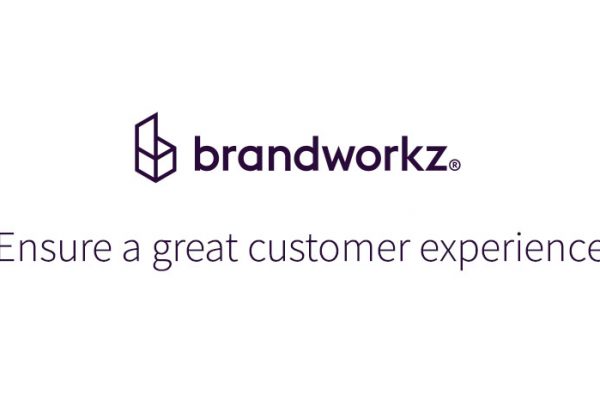In a market filled with more noise than ever, having cohesive, consistent branding that shouts your message loud and clear is a no-brainer. You know that, heck, even Brenda in Accounts knows it! The question is, how do you get there?
While you might be more used to seeing it applied on the football field, a decent strategy could well be the answer. You see, the average brand these days has even more components than a Man United vs Liverpool match, especially when you factor in now-vast digital touchpoints like social media and video. As such, branding that comes together as a whole to impress your audience and provide some healthy competition ultimately relies on a well-laid, decently structured strategy that brings those components together, and makes sure they’re all performing to their best.
Of course, far from focusing on one-time performances, strategic brand management ensures strong, consistent branding through sustainable long-term policies that improve reputation, retention, and differentiation. Increasing agility, oversight, and perception across your brand can help you to do that while keeping objectives in mind, but we’re going to make things even easier with a whole article about how to truly embrace strategic brand management that takes you to the top and keeps you there. Let’s get started.
Suggested reading: Our article What is Good Brand Management in 2022? is another great starting point on what to look for in your brand management in the new year.
Step 1: Set goals
Strategy basically involves plans that take an overall view of how to bring your branding vision to life. Goals that guide that strategy can both simplify your ability to create viable plans, and pave the way for their success. A goal-based focus also gives every member of your team a clear guide for consistency, to ensure relevant, future-proofed branding that doesn’t fall foul to embarrassing changes that are unlikely to work out moving forward.
Of course, from the outside, this can seem like just another timely obstacle in the way of successful branding. Luckily, goal-based strategising couldn’t be simpler. In fact, the answers you need are already there for the taking in the form of your overall business objectives. All you have to do is get specific about how to align your brand strategy with those familiar focuses, especially considering what each branding element is trying to achieve, what you need to prioritise to make that happen, and which elements are relevant to the goal in question. It’s especially worth aligning unique business objectives alongside broader brand goals such as:
- Awareness
- Emotional connection
- Differentiation
- Credibility and trust
- Conversion-creating value
Step 2: Get your branding right
Given that you can’t apply a strategy to a brand that doesn’t exist, we’re going to go ahead and assume that you have an established brand already. That’s great news, but strategy applied to a weak brand lost in an identity crisis is still going to fail in the end.
Hence why you also need to make sure that you’re getting branding ‘right’, which in large part means returning to the basics. Obviously, we could write a whole article about this alone (and we sort of have, for anyone interested!) but branding ‘done right’ most often comes back to a few key focuses that include:
- A credible brand story
- Clear brand guidelines (covering everything from visual details to tone of voice (TOV) and messaging)
- Single, concise brand messaging
- A trustworthy brand personality
- Goals as defined by your brand values and brand vision
Across each of these, great branding also relies on one overarching thing – CONSISTENCY! Of course, a consistently bad brand is still going to prove next to useless, which is where strategy really comes into its own. As well as narrowing down on your goals, you especially need to gain a clearer picture of your brand assets (e.g. logo, images, video, all that good stuff) and consider how each is performing, plus how they could better align with your objectives. This is a 101 for a more effective strategic approach, as is sending that message loud and clear across your enterprise.
All of this is most easily achieved by bringing your brand together under one roof, often through the use of cohesive one-source platforms like digital asset management (DAM) software. The oversight offered by this solution especially ensures the control you need to make it clear what great branding should look like, and whether that’s currently coming to fruition/why it isn’t.
Suggested reading: Check out our eBook that goes into even more detail on how brand consistency supercharges your brand management and how you can achieve it with The Brand Consistency Toolkit.
Step 3: Automate and streamline where it makes sense
You know it, we know it, and we’ve already covered it briefly in the point above, but branding is filled with balls like graphics, video, and marketing communications, all of which can take up a load of your time if you’re having to juggle each one individually or make minor artwork changes, etc. on a bit-by-bit basis. All of this can significantly minimise your time to strategise, leaving you one step behind and ultimately missing out on the advantage that a strategic, creative approach has to offer.
Of course, we’ve already talked about how important getting branding right is for strategy, meaning that you can’t afford to simply let things slide. So, something has to give, but what exactly is that? Honestly, this again comes back to your software. More than just keeping things in one place, however, true simplification means finding the right tools, rather than just the convenient ones.
Let’s say that a DAM as spoken about is a baseline for efficiency — that’s great news and a necessary part of your brand arsenal, but that DAM alone is not going to help you perform at your best, or even get your strategy halfway in the bag. Instead, you need to get specific about tools that allow you to automate and streamline the processes that your DAM is helping you to manage. Most notably, simplifying the brand battle so that you can focus on the important stuff relies on your ability to:
- Implement workplace-wide templates
- Automate your workflows
- Ensure centralised access to logo iterations, etc.
- Keep brand documents accessible
- Oversee changes/progress
These are benefits ultimately built on DAM capabilities but they’re never going to be achieved by the first DAM software you come across. Instead, true simplification is about considering the tools currently in your arsenal, and replacing unsuitable solutions (or at least ones that fall short of this high bar), with alternatives like brand management software (BMS) that are specifically designed to take care of branding, and often consistency, so that you don’t have to.
Step 4: Measure key metrics
Strategy is an ever-changing process that takes its own results into account to make improvements. With that in mind, embracing strategic brand management also means embracing metrics, and taking the time to understand what they mean.
Common metrics especially worth tracking include:
- Sales/customer lifetime value (CLV)/retention
- Brand sentiments
- Brand awareness
- Brand consistency
Metrics like CLV and even brand sentiments (e.g. how people perceive what you’re doing) are easy enough to master because they’re generally available across activities on platforms like social media and your website. This is especially true if you take the time to form trackable brand experiences through email newsletters, hashtags, etc.
By comparison, something like brand consistency is harder to get a grasp on, especially as ever-expanding brand focuses (e.g. logo iterations implemented across in-person/social media/website sales) send branding offshoots soaring out of sight. Again, tools like brand management software are your best chance at control here, in large part thanks to accessible and clear templates as well as guidelines. Access to one-view, business-wide brand metrics also make it easier to see how the elements of your brand are being used (both in-house and out), how they’re being received (further helping to make sense of CLV), and how your strategy moving forward can align with this all-important information to truly provide branding power.
Give yourself the flexibility to focus on strategy
Good strategy relies on a dedicated and streamlined understanding of what’s happening across even far-flung brand elements. You’re never going to be able to pave or even identify that path to success if you’re too caught up on miniscule details. Instead, you need to be able to keep smaller considerations in check alongside a bigger-picture outlook with the help of visibility, speed, and flexibility to allow you to focus on strategies that work. Brand management software that centralises, simplifies, and tracks brand management at top level and across your workplace is the best option for achieving that. Get this right, and you should find that the perfect strategy falls into place not far behind.
Want to know more about how the right software can take your brand management to the next level? Get a demo of our product Brandworkz to see exactly how.





